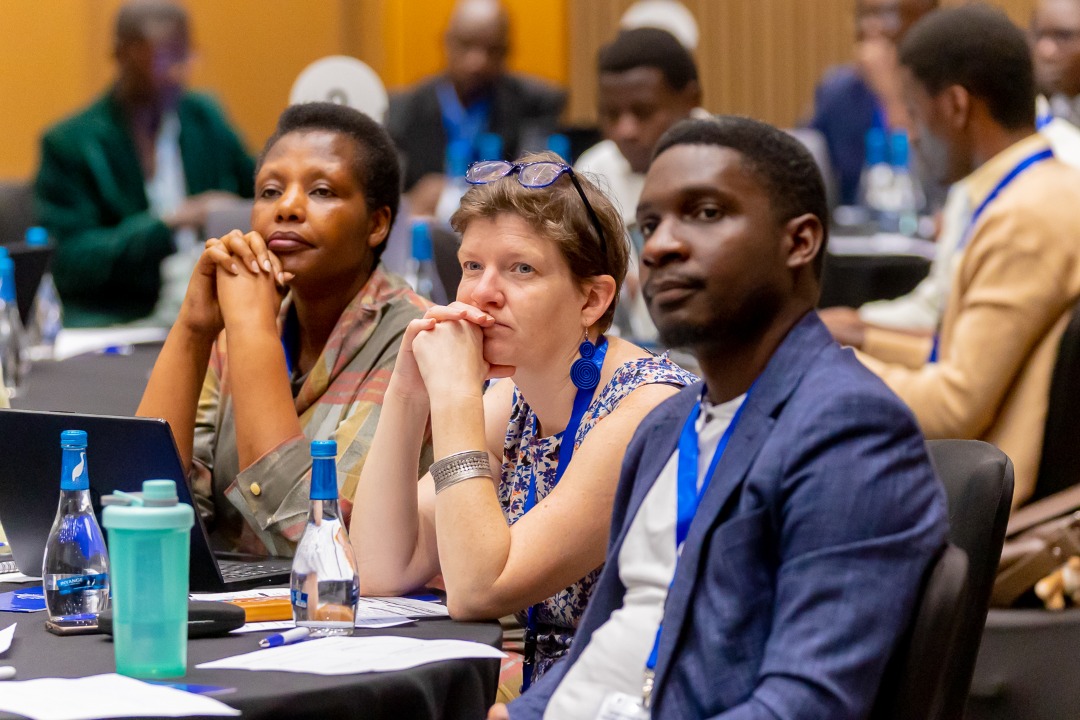
Min. Gaspard Twagirayezu chating with guests during the meeting in Kigali, Jan 18
Singapore is well-known for its high quality of education in the world, ranking higher than some developed countries like Canada and Switzerland.
This success is owed to teachers’quality training on delivering lessons and effective students’ assessment system.
Local policymakers, and academics, are studying Singapore education success, and could “borrow a leaf” from it, especially to improve assessment policy for lower primary−From Primary one to three.
“We have existing assessment systems that have been used for the last two…. three years. But we need to improve it, make it better. We have a comprehensive assessment system, but we need to learn from the best to improve. This is why we have experts from Singapore, and we shall have several others, from other countries,” Gaspard Twagirayezu, Minister of State for Primary and Secondary Education said.
Min. Twagirayezu was on January 18 the guest of honor at the launch of a three-day foundational learning symposium, organized by the Ministry of Education in Partnership with the World Bank.

Singapore is among top five in the world programme for International Student Assessment (PISA). The PISA ranking is based on tests taken by 15-year-olds all across the world.
“The assessment will be broad, we are planning to design a way for students to work together and be assessed. When students graduate, they go to work and work in teams. So, it is important to evaluate teams also,” he said.
To evaluate what pupils have learnt and to assign grades or qualifications based on the assessment results, Singapore uses quantitative classroom assessments, such as traditional pen and paper quizzes and exams.
In Singapore, the teachers include the assessment into their lessons and classroom activities. For instance, the teacher can observe how a pupil’s approach can solve a problem, and ask them to describe their methods.
In almost a similar scenario,teachers encourage students to evaluate their own work and to think critically about their own learning, including what they believe they can or ought to do to enhance it.

A participant giving a contribution during the meeting
Also, teachers frequently quiz their pupils to promote learning based on prior knowledge (common sense). The teacher can clear up a misconception or reiterate a sound concept using this question-and-answer format.
Jeen-Peng Tan, an education expert who discussed Singapore’s education transformation said inquiries during classes challenge pupils to think “beyond the box.”
“We must remember the teachers when discussing education since they are the ones who make learning happen in classrooms. The high calibre of teachers in Singapore’s educational system is one of the factors contributing to its success,” Tan said.
The Organization for Economic Cooperation and Development (OECD) conducts PISA, a test of 15-year-olds’ critical thinking in math, science, and reading, every three years in over 65 nations that account for 90% of the world’s GDP.
Singapore has been among the countries with the best education system.
For instance, in the most recent PISA results from 2018, China came out on top, followed by Singapore in second place and Estonia in third place. The United States of America finished in position 22.

Minister Gaspard Twagirayezu giving his remarks
Singapore gained its independence in 1959. In order to increase its human resource capacity, the government chose to invest in education and reform the educational system in the 1960s. In order to promote nation-building and establish an integrated Singaporean society, the government also employed education as a tool.
In order to achieve these national goals, the government correctly recognised the need to give every child at least 6 years of education starting at age 6 – without regard to race, language, sex, level of money, or status.
Therefore, their initial action consisted of offering free basic education to all children. To pull this off, the government allotted more than 20% of its budget to education, especially in light of the soaring costs of infrastructure for basic and secondary education.

